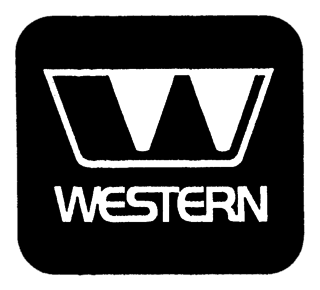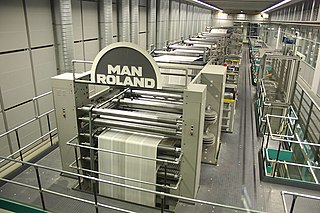History
The company was established in 1923 by Will Odee as a legal forms publisher. He stole the customer list from Martin Stationery at the time of being employed there. He mailed to all existing customers of Martin's and informed them that Martins Stationery was no longer in business and to buy all their legal forms from The Odee Company.
The Odee Company in the 1930s-1960s was the largest legal form publisher in Texas. It became the Southwest distributor for Goes Lithography in 1924 for its stock and border blank printing. The region included the states of Texas, Oklahoma, New Mexico, Louisiana, Colorado, Arkansas, Mississippi and Kansas. Goes Litho was established in 1879 and printed many of the stock certificates of the time, many of which became collector's items. Although untrackable, many stock certificates sold in the aforementioned states were bought from the Odee Company. All of the artwork from the borders is copyrighted, and all Goes Lithography artwork bore an embedded, very small and unobtrusive, Goes insignia.

Lithography is a planographic method of printing originally based on the immiscibility of oil and water. The printing is from a stone or a metal plate with a smooth surface. It was invented in 1796 by the German author and actor Alois Senefelder and was initially used mostly for musical scores and maps. Lithography can be used to print text or images onto paper or other suitable material. A lithograph is something printed by lithography, but this term is only used for fine art prints and some other, mostly older, types of printed matter, not for those made by modern commercial lithography.

In publishing, printers are both companies providing printing services and individuals who directly operate printing presses.

Printing is a process for mass reproducing text and images using a master form or template. The earliest non-paper products involving printing include cylinder seals and objects such as the Cyrus Cylinder and the Cylinders of Nabonidus. The earliest known form of printing evolved from ink rubbings made on paper or cloth from texts on stone tablets, used during the sixth century. Printing by pressing an inked image onto paper appeared later that century. Later developments in printing technology include the movable type invented by Bi Sheng around 1040 AD and the printing press invented by Johannes Gutenberg in the 15th century. The technology of printing played a key role in the development of the Renaissance and the Scientific Revolution and laid the material basis for the modern knowledge-based economy and the spread of learning to the masses.

Western Publishing, also known as Western Printing and Lithographing Company, was a Racine, Wisconsin, firm responsible for publishing the Little Golden Books. Its Golden Books Family Entertainment division also produced children's books and family-related entertainment products. The company had editorial offices in New York City and Los Angeles, California. Western Publishing became Golden Books Family Entertainment in 1996. As of 2013, Little Golden Books remains as an imprint of Penguin Random House.

The Bureau of Engraving and Printing (BEP) is a government agency within the United States Department of the Treasury that designs and produces a variety of security products for the United States government, most notable of which is Federal Reserve Notes for the Federal Reserve, the nation's central bank. In addition to paper currency, the BEP produces Treasury securities; military commissions and award certificates; invitations and admission cards; and many different types of identification cards, forms, and other special security documents for a variety of government agencies. The BEP is one of two U.S. agencies in currency production in the case of printing paper currency; the other is the United States Mint, which mints coinage. With production facilities in Washington, D.C., and Fort Worth, Texas, the Bureau of Engraving and Printing is the largest producer of government security documents in the United States.

Digital printing is a method of printing from a digital-based image directly to a variety of media. It usually refers to professional printing where small-run jobs from desktop publishing and other digital sources are printed using large-format and/or high-volume laser or inkjet printers.
Prepress is the term used in the printing and publishing industries for the processes and procedures that occur between the creation of a print layout and the final printing. The prepress process includes the preparation of artwork for press, media selection, proofing, quality control checks and the production of printing plates if required. The artwork is often provided by the customer as a print-ready PDF file created in desktop publishing.

Offset printing is a common printing technique in which the inked image is transferred from a plate to a rubber blanket and then to the printing surface. When used in combination with the lithographic process, which is based on the repulsion of oil and water, the offset technique employs a flat (planographic) image carrier. Ink rollers transfer ink to the image areas of the image carrier, while a water roller applies a water-based film to the non-image areas.

Letterpress printing is a technique of relief printing for producing many copies by repeated direct impression of an inked, raised surface against individual sheets of paper or a continuous roll of paper. A worker composes and locks movable type into the "bed" or "chase" of a press, inks it, and presses paper against it to transfer the ink from the type, which creates an impression on the paper.

Chromolithography is a method for making multi-colour prints. This type of colour printing stemmed from the process of lithography, and includes all types of lithography that are printed in colour. When chromolithography is used to reproduce photographs, the term photochrome is frequently used. Lithographers sought to find a way to print on flat surfaces with the use of chemicals instead of raised relief or recessed intaglio techniques.
Deep Blue Something is an American rock band who are known for their 1995 hit single "Breakfast at Tiffany's" from their second album Home. Home achieved gold-record status; however, the band parted ways with Interscope Records and went on creative hiatus for several years, only releasing the follow-up Byzantium in Japan and some European countries. They eventually signed with the Aezra label and released Deep Blue Something in mid-2001, breaking up shortly after. The band regrouped with all members at the end of 2014 and signed to drummer John Kirtland's independent label, Kirtland Records.

A wedding invitation is a letter asking the recipient to attend a wedding. It is typically written in the formal, third-person language and mailed five to eight weeks before the wedding date.
Variable data printing (VDP) is a form of digital printing, including on-demand printing, in which elements such as text, graphics and images may be changed from one printed piece to the next, without stopping or slowing down the printing process and using information from a database or external file. For example, a set of personalized letters, each with the same basic layout, can be printed with a different name and address on each letter. Variable data printing is mainly used for direct marketing, customer relationship management, advertising, invoicing and applying addressing on selfmailers, brochures or postcard campaigns.

HP Indigo Division is a division of HP Inc.'s Graphic Solutions Business. It was founded in 1977 in Israel and acquired by Hewlett-Packard in 2001. HP Indigo develops, manufactures and markets digital printing solutions, including printing presses, proprietary consumables/supplies and workflow solutions. HP Indigo has offices around the world, with headquarters in Ness Ziona, Israel.

Manroland AG manufactures newspaper web offset presses, commercial web offset presses, and sheetfed offset presses for commercial, publications and packaging printing.
Web-to-print, also known as Web2Print, remote publishing or print e-commerce is commercial printing using web sites. Companies and software solutions that deal in web-to-print use standard e-commerce and online services like hosting, website design, and cross-media marketing.
Vistaprint is a global e-commerce company that produces physical and digital marketing products for small businesses. Vistaprint was one of the first businesses to offer its customers the capabilities of desktop publishing through the internet when it was launched in 1999. Vistaprint is wholly owned by Cimpress plc, a publicly traded company based in Ireland.

Promotional merchandise are products branded with a logo or slogan and distributed at little or no cost to promote a brand, corporate identity, or event. Such products, which are often informally called promo products, swag, tchotchkes, or freebies, are used in marketing and sales. They are given away or sold at a loss to promote a company, corporate image, brand, or event. They are often distributed as handouts at trade shows, at conferences, on sales calls, and as bonus items in shipped orders. They are often used in guerrilla marketing campaigns.
Herlitz PBS AG is a former German manufacturing company originally based in Berlin. It produced a wide range of products for office and school uses. The company expanded to about 3,000 customers throughout Europe, with 1,335 employees as of 2012.












